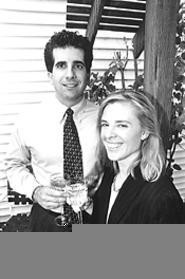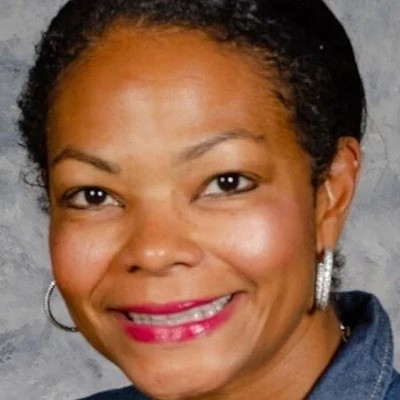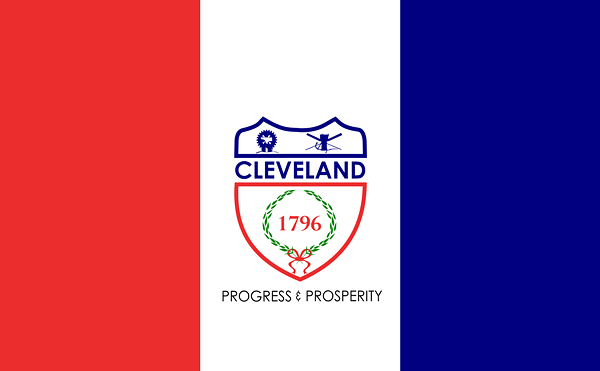The gurus of the gumption movement were two buttoned-down men with horn-rimmed glasses. Dale Carnegie, who preached compassion for others and admitting your faults, was the Oprah of the day. Ralph Smedley, a lover of words and a stickler for structure, was more of a touchy-feely taskmaster like Montel.
While lesser pop psychologists have faded into the wallpaper, these gentlemen endure. Carnegie's 1936 book, How to Win Friends and Influence People, is second only to the Bible in all-time sales. Smedley's after-dinner speaking club, the Toastmasters, is now a forensic and networking organization that boasts 170,000 members worldwide.
And some of those members aren't even octogenarians. A few weren't even around when Cher gave Sonny the shaft.
Gen Xers supposedly can't hike their pants up over their hips, let alone pull themselves up by their bootstraps. What could two spindly old guys possibly have to say to them?
How about this: "Try leaving a friendly trail of little sparks of gratitude on your daily trips. You will be surprised how they will set small flames of friendship that will be rose beacons on your next visit."
Sounds like someone sprinkled ecstasy on Carnegie's Cheerios. But what he's basically saying, in the purple prose of the day, is "Perform random acts of kindness."
How to Win Friends, last revised in 1981, still contains much of the original 1930s slang. Its flowery diction today seems more suited for high tea with Aunt Mabel than for power lunches; its anecdotes are peopled with moldy heroes like William Jennings Bryan and John D. Rockefeller. The 1981 edition tried to catch up with the times by adding anecdotal references to Paul Harvey and Stevie Wonder. Apparently Don Ameche and the Captain & Tenille didn't make the cut.
But the throwback quotient doesn't bother Rachel Wilkins, who's 25. She's the youngest worker at her company. "It's a typical Cleveland manufacturing company," she says. "Privately owned. Male."
Wilkins was sent Carnegie's way by her elders. "They weren't sure how to talk to me and thought that, me being a young person, [the course] would help me deal with them."
Expecting to walk into a room full of suits, she was pleasantly surprised by her classmates. They included a turbaned Sikh who came to the United States with $21 in his pocket, a plumber who described his pre-Carnegie persona as "Mr. Doom and Gloom," and a wry, gangly Avon Lake High senior who has the hip-hop mannerisms down.
While some of her peers admit they didn't get around to reading the book during the 12-week course, Wilkins, an English major in college, devoured it. "It's a great read," she says.
The anecdotes, she remarks, hark back to a time when role models actually aspired to impeccable character. And the Shirley Temple-era principles, like "Be hearty in your approbation and lavish in your praise" and "Let the other person save face," have a hopefulness and poignancy lacking today.
Like Rachel, lots of Gen X and Yers take the class because old people sign them up for it, admits John Langsdon, head of the Dale Carnegie training office in Garfield Heights. An instructor for 30 years, Langsdon has a luxurious head of silver-white hair and a folksy air about him, even though he's dressed in business-casual bland.
Some families boast three generations of Dale Carnegie graduates, Langsdon says. One guy feigned fervor, only to confess at the final session that he signed up because "it was in his grandma's will that all the grandkids take the Dale Carnegie course. It was paid for. She had taken it years before, and it had such an impact on her life."
She could've saved herself a few bucks by signing them up for Toastmasters instead. Dues for the Toastmasters chapter that meets at the Cleveland Public Library run about $18 a year, compared to $1,300 for Dale Carnegie. Toastmasters can rack up a hefty chunk of change on the side, though: Some chapters charge 25 cents for every "um" and "ah" a speaker indulges in.
"The most ums and ahs I've ever heard were from a seasoned Toastmaster, probably an eight-year member," says Cathy Kingsley, 34, a bank manager and member of three Toastmasters groups. "He had 27 ahs and 13 ums, and other grammatical errors. The next meeting, he was much more careful, and he only had three ahs and two ums."
Kingsley's husband, Brian, is a Toastmaster, too. On a quiet night in front of the TV, the couple might count the ums and ahs that crop up on their favorite shows. Good thing President Bush isn't a Toastmaster -- he'd dry up an oil well paying his filler bill.
"Usually, when you're reading off a piece of paper, you get it right," says Cathy. "He doesn't."
Maybe Lars Ulrich, the drummer from Metallica, could tutor him. "He's very smooth," notes Brian, who was impressed by Ulrich's eloquence on an Internet music panel. "I picture him up on a stage thrashing, and here he is, a very polished speaker."
Non-thrashers Mary and Meggan Quinn were introduced to Toastmasters by their dad.
Mary, 24, is the youngest member of her chapter. The personal-experience speeches can be especially awkward for her, because she's talking about her "crazy, wild college days" to people her parents' age. And her crazy, wild college friends think Toastmasters is pretty weird. "They're like 'A speaking club?' I don't think it's being marketed to our age."
Now's the time for them to learn about it. In another 10 years, Toastmasters might have a "like" and "whatever" counter, and they'd be out a substantial sum.














